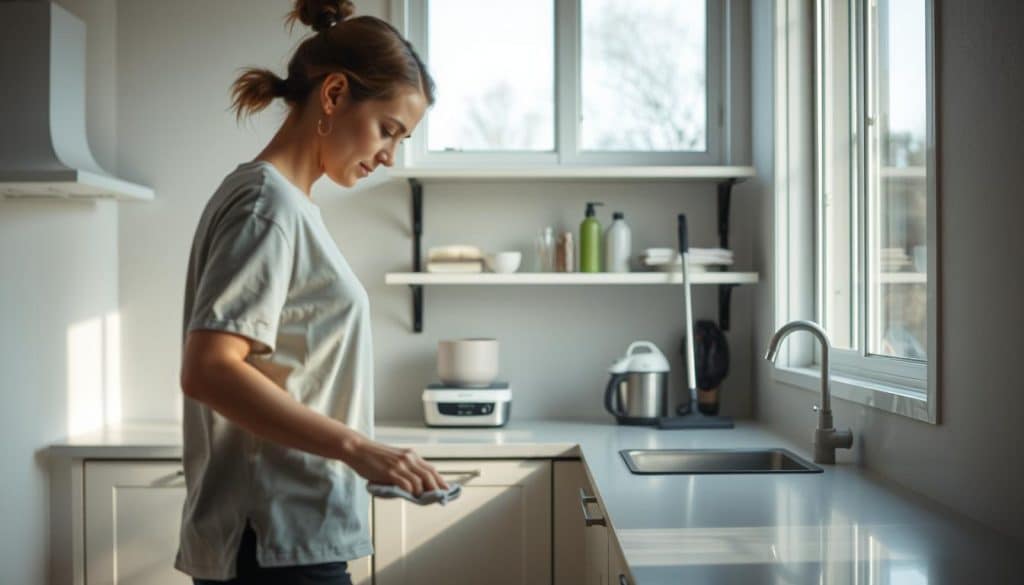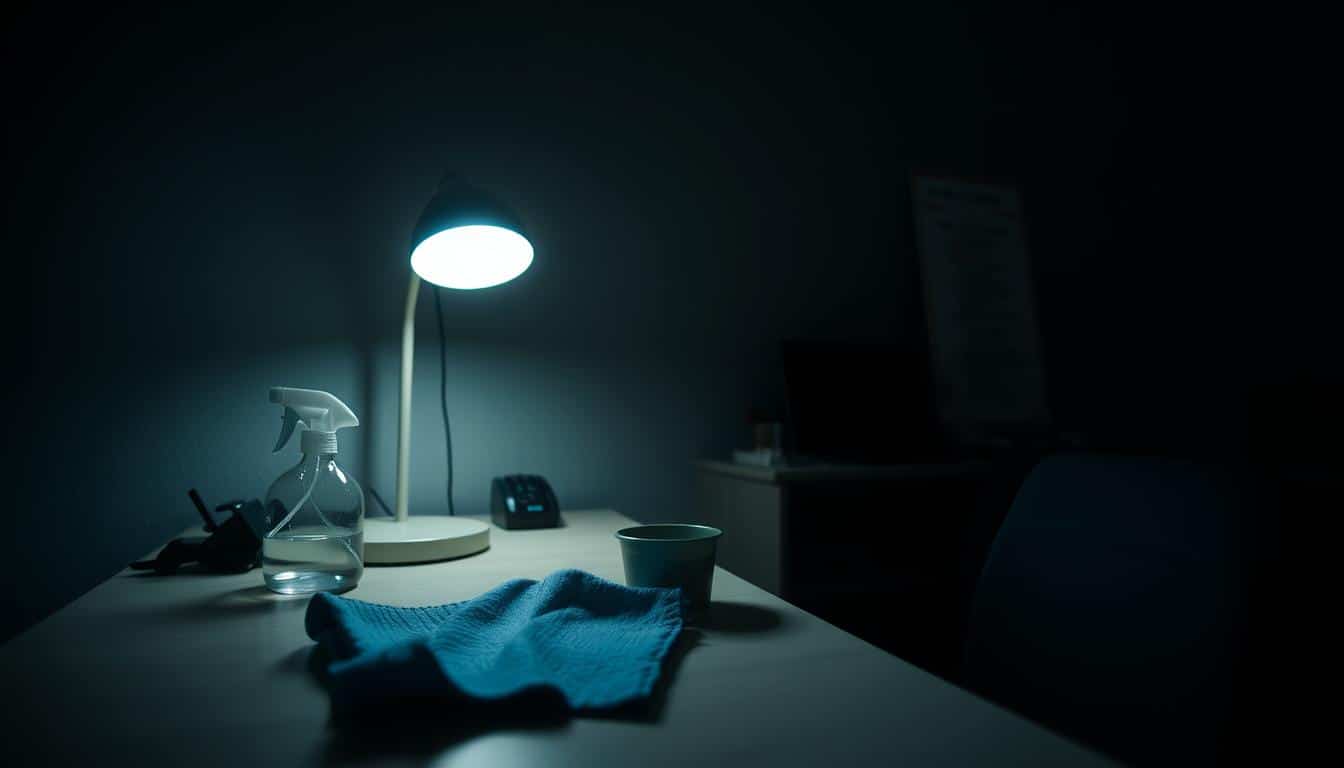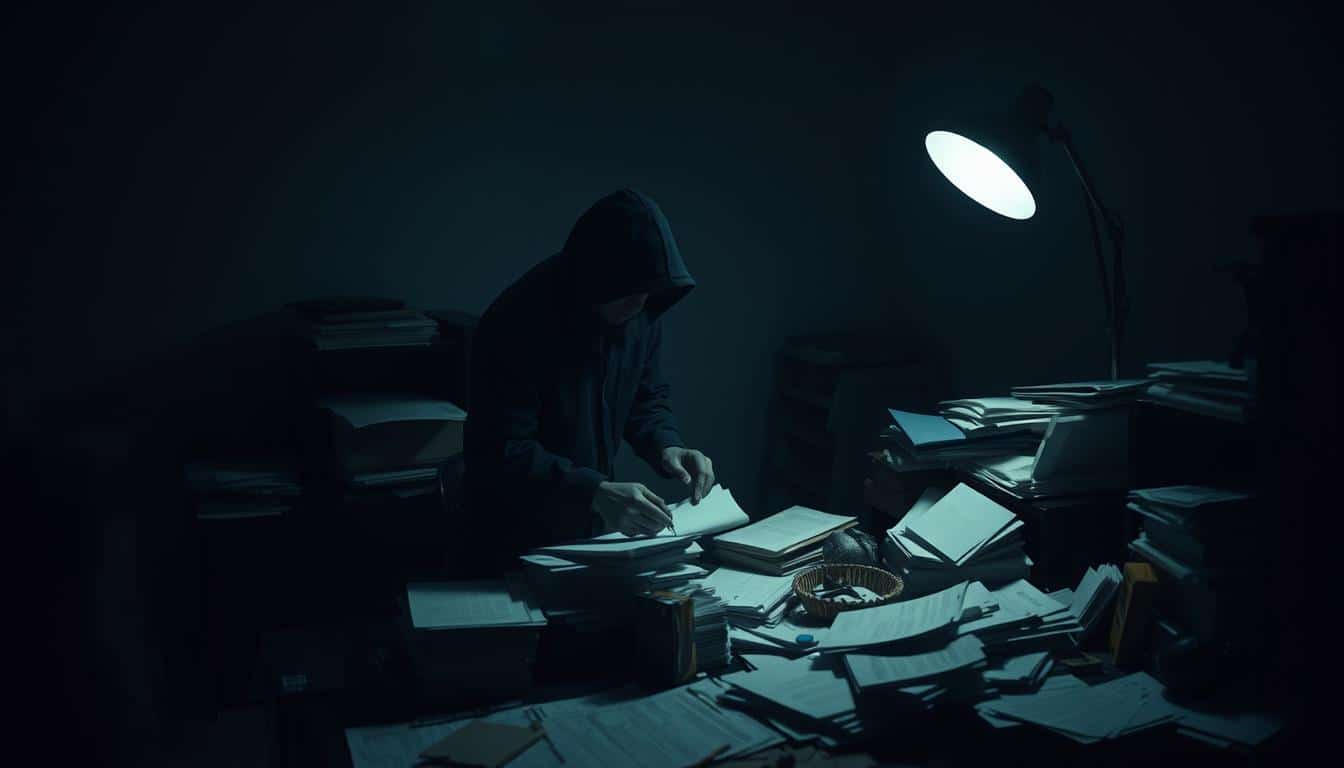Maintaining a clean space during overnight shifts is key, especially in places like hospitals and offices where noise matters. This piece shares silent cleaning tips to work efficiently without bothering those resting or working at night. These strategies will help you keep things clean and quiet at the same time. Discover new methods to make overnight cleaning easier and more effective.
Understanding the Challenges of Overnight Shifts
People who work overnight face many challenges that can harm their health. These challenges include trouble sleeping and feeling more tired. Working at night can lead to feeling overwhelmed due to uneven workloads.
Fatigue is a big problem for those who work overnight, since not getting enough sleep can make it hard to think clearly. It can also make them less productive. Plus, working irregular hours can increase the risk of serious health issues like heart disease.
More than 30% of night shift workers report major health problems because of their schedules. This is a big concern in healthcare, where taking care of patients well is critical. Working all night can also make people feel more stressed and possibly lead to burnout.
Why Silent Cleaning is Essential in Quiet Environments
Quiet cleaning is super important in places like hospitals and nursing homes. These places need peace for healing. Loud noises can make patients feel uneasy and hurt their rest. Too much noise has been proven to mess up sleep and slow down recovery.
Keeping things quiet helps patients heal better. Cleaning in healthcare places must be done with little noise. This makes sure patients can rest well. Using quiet cleaning methods makes the space better for getting well.
Research shows that a calm space helps patients heal faster. That’s why using silent cleaning methods is key. It makes the environment calm, helping recovery. Knowing how noise affects these places leads to better cleaning and happier patients.
Silent Cleaning Hacks for Overnight Shifts
Implementing silent cleaning strategies is crucial during overnight shifts. Using the latest tech and products helps clean quietly.
Utilizing Vacuum Cleaners with Silent Technology
The Electrolux UltraSilencer is a great choice for quiet cleaning. It only produces 68 decibels of noise, similar to a conversation. This vacuum cleans well while keeping things peaceful for night staff.
Choosing the Right Cleaning Supplies for Quiet Operation
It’s important to pick cleaning supplies that don’t make much noise. Choose products designed for noise reduction. For example, certain spray cleaners are made to work quietly. Also, soft-bristled brooms and green products help keep the noise down. Choosing these supplies makes the environment better and supports eco-friendly habits.
Strategic Planning Before Shifts
Cleaning well during the night needs smart planning to keep things quiet. A smart cleaning plan doesn’t just make things cleaner, it also makes work faster. Staff can do their jobs smoothly without bothering anyone nearby.
Organizing Cleaning Areas for Efficiency
Setting up a smart layout for cleaning is key for good results. Here are some tips to organize cleaning well:
- Zone Cleaning: Break cleaning areas into zones for each team member. This helps focus efforts and reduces walking around.
- Accessibility of Supplies: Keep cleaning supplies well-organized and easy to get in each zone. This helps finish tasks faster and quietly.
- Clear Role Definitions: Make sure everyone knows their job. This keeps things running smoothly.
By using these strategies, teams can clean efficiently and quietly. This makes overnight work more successful with fewer interruptions.
Timing Your Cleaning Tasks Effectively
Timing your cleaning right is key to keep things quiet and efficient. A good cleaning schedule is central to making it happen.
Knowing when a place gets busy helps avoid cleaning at those times. This way, there’s less bother for everyone. By choosing slower times for loud jobs like vacuuming, we disturb fewer people.
Watching how busy a place is and adjusting cleaning times can make everyone’s work go smoother. Facilities can try:
- Using sensors or watching the area to see how busy it is.
- Changing schedules based on what’s happening right now, so cleaning happens when it’s least disruptive.
- Focusing on busy spots when fewer people are around, to make the most impact.
- Teaching staff to use up-to-date info to quickly change plans if needed.
- Allowing people to give feedback on when cleaning should happen.
By weaving these ideas into a cleaning plan, we can keep places nice without making too much noise. This makes a space where everyone is happier.
Designing a Quiet Cleaning Routine
Making a quiet cleaning plan is key for a peaceful night. Being mindful when cleaning makes this routine more effective. By being aware of your environment, you can clean quietly without bothering anyone.
Incorporating Mindfulness into Your Cleaning Process
Mindfulness turns cleaning into a calming activity. Here are ways to do it:
- Engaging in soft movements to avoid unnecessary noise.
- Maintaining low voices when communicating with team members.
- Being aware of the presence of sleeping individuals to prevent waking them.
These steps help make a quiet cleaning routine. Focusing on mindfulness doesn’t just quiet things down. It also helps us think before acting, avoiding loud mistakes. This way, cleaning becomes not just quiet, but thoughtful, improving the space for everyone.
Effective Communication with Team Members
Open and effective communication is key for success in overnight cleaning shifts. Well-defined communication strategies greatly improve how the team works together. Teams can use non-verbal signs for silent cleaning teamwork.
Hand signals and quiet reminders help team members work together without making noise. This is important for not disturbing others.
Clear roles and responsibilities make the team more efficient. When everyone knows their duties, cleaning goes smoother. This not only keeps the area quiet but also helps the team work better together.
- Consider using hand gestures to signal needs without verbal interruptions.
- Encourage soft-spoken reminders to keep communication smooth and quiet.
- Regularly review roles to ensure everyone knows their part in the silent cleaning teamwork.
Equipment to Consider for Non-Intrusive Cleaning
Choosing the right tools is key to effective silent cleaning, especially for those working at night. Non-intrusive cleaning gear helps keep the noise down. Many silent cleaning products are available to make your job easier.
Battery-operated, brushless vacuum cleaners are a go-to for many. They’re quiet yet strong, cleaning floors without making a lot of noise. Mops with special tech to reduce sound also provide a quiet way to clean surfaces.
Other cool tools include low-noise cooling and air-conditioning cleaners. These help keep spaces clean and quiet. Using such quiet cleaning tools can make nighttime cleaning jobs smoother and quieter.
Best Practices for Maintaining Cleanliness Without Noise
Using quiet cleaning practices is crucial in places like hospitals and offices. Using modern, low-noise equipment helps reduce disturbances. For example, some vacuums and burnishers work at just 62 decibels, meeting LEED v4 standards.
Having a regular cleaning schedule can cut down on noise. This prevents heavy dirt buildup that needs louder cleaning methods. Keeping cleaning gear like vacuums in top shape ensures they run quietly. Addressing cleaning tasks before they pile up keeps things clean and noise down.
Natural cleaning products make for a healthier indoor space and less noise. Traditional cleaners often have chemicals that add to the air. Using simple ingredients like water or vinegar means less hard scrubbing, which is quieter.
Choosing unscented cleaning supplies makes for a calmer night environment. Strong scents from regular cleaners can disrupt sleep and pollute the air indoors. Fragrance-free, natural cleaners cause fewer disturbances, creating a quieter and healthier space.
Finding and cutting down on noise sources helps keep cleaning quiet. For instance, turning off unused electrical goods lowers background noise. Adding natural elements, like trees, acts like a natural sound barrier, further reducing noise.

Conclusion
To sum up, the cleaning hacks for nighttime are really important. They need a plan that thinks about quiet. Using silent vacuums and the right cleaning tools is key. This makes sure cleaning doesn’t bother people in places where quiet is needed, like hospitals.
Wrapping up, planning well and choosing when to clean matter a lot for keeping places quiet at night. These steps help a lot in places that need to stay quiet. They make sure cleaning does its job without breaking the calm. This way, everyone in those places can stay comfortable and safe.
Using these quiet cleaning methods does more than keep things clean. It shows a place cares about keeping things peaceful. With these methods, places can find the right balance between staying clean and quiet. This is good for both the people who work there and those who use the space.



